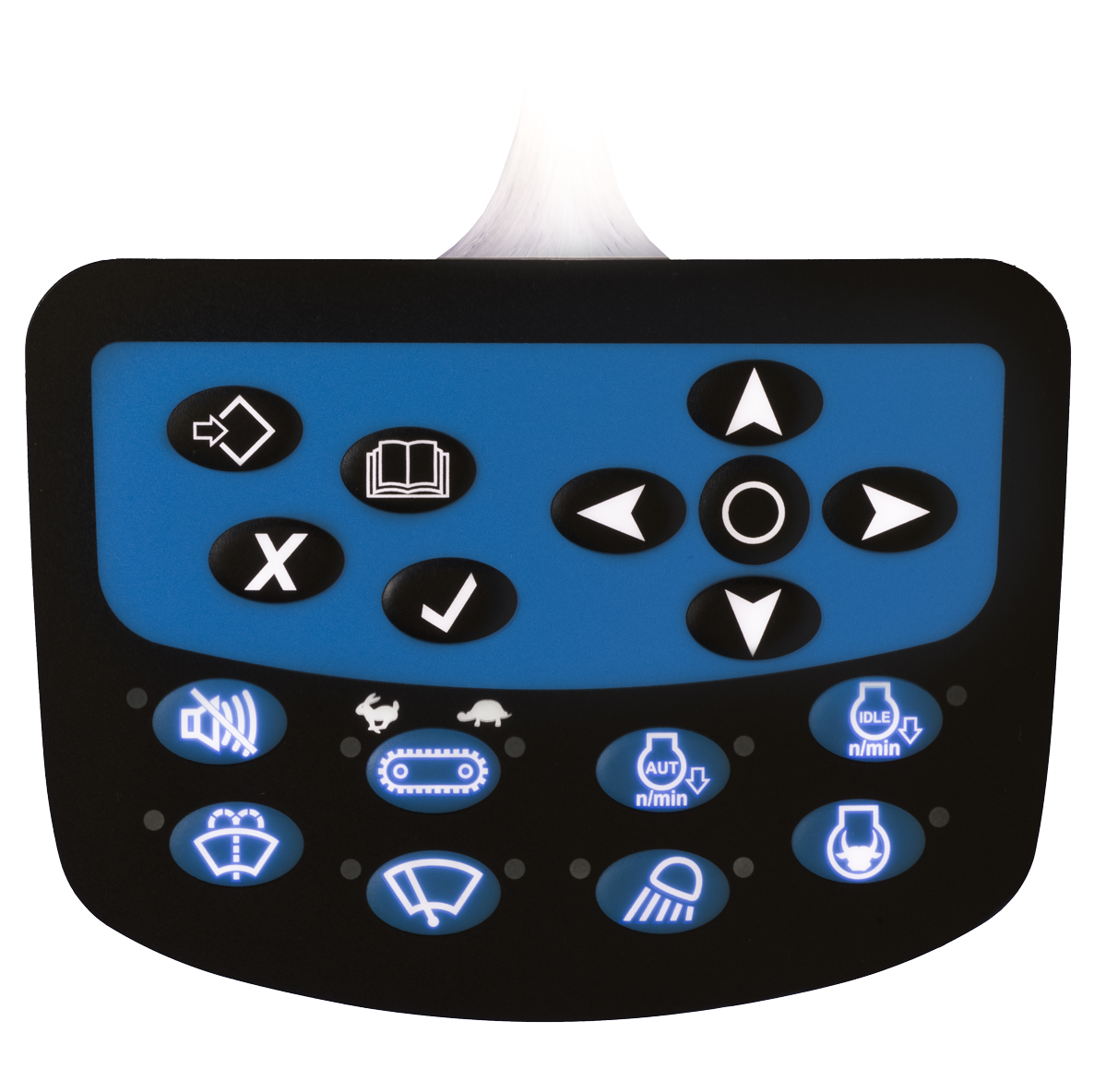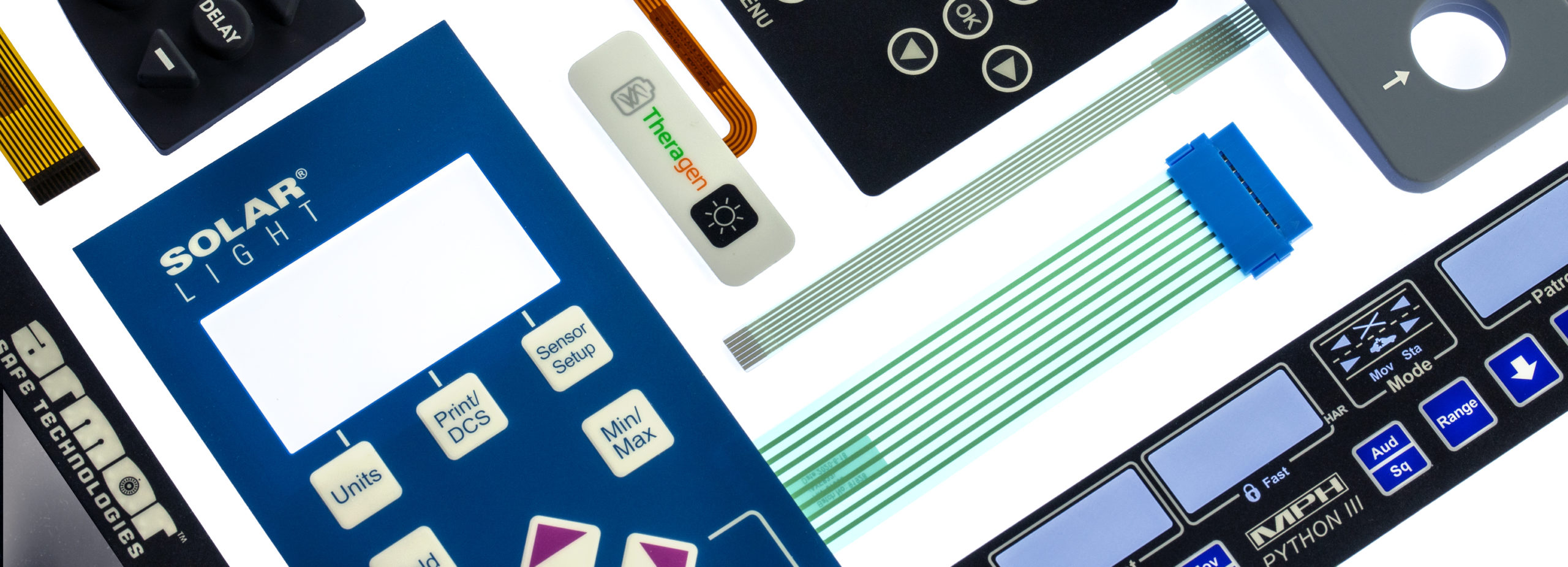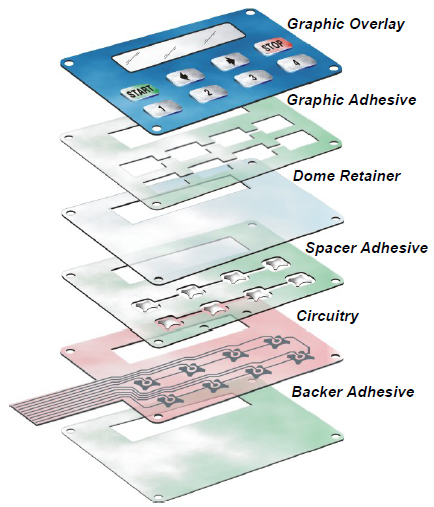All About Membrane Layer Switch Over: Understanding Its Design and Performance
When you believe regarding the control interfaces in modern-day tools, membrane layer buttons usually come to mind. Let's discover what sets membrane layer changes apart from various other control systems.
What Are Membrane Buttons?

Membrane switches can also be personalized concerning form, size, and graphics, enabling manufacturers to produce unique interfaces tailored to particular products. Generally, membrane switches play a substantial role in improving user experience across a vast range of applications.
Just How Membrane Layer Switches Over Work
When you push a key on a membrane layer button, it turns on a straightforward yet reliable system. The leading layer, usually constructed from adaptable material, lowers onto a conductive layer underneath it. This activity bridges the void in between conductive traces, finishing an electric circuit. As soon as the circuit closes, it sends a signal to the device's controller, which translates your input.
You'll notice that the tactile responses differs based upon the button design, offering either a soft click or an extra noticable reaction. When you launch the key, the membrane layer go back to its initial placement, resuming the circuit and stopping the signal. This process happens nearly instantaneously, ensuring a receptive user experience.
Membrane layer switches are prominent because of their durability and resistance to dust and dampness, making them ideal for different applications, from family devices to medical devices. Understanding this operation aids you value their prevalent use.
Secret Components of Membrane Buttons
Understanding the crucial elements of membrane switches is basic for realizing their capability and style. At the core, you'll find the graphic overlay, which gives the aesthetic user interface for customers. Beneath that, there's a spacer layer that divides the circuit layers, making sure that they don't make contact till pressed. The circuit layer is where the magic takes place; it contains conductive traces that finish the circuit when you press the button. An additional crucial component is the sticky backing, enabling the button to stick to surfaces firmly. The protective layer shields against ecological aspects and wear, expanding the button's lifespan. Each part plays a considerable role in making certain trustworthy performance and customer interaction. By comprehending these elements, you'll get understanding right into how membrane switches over operate and their relevance in various applications.
Materials Made Use Of in Membrane Layer Switch Design
The efficiency and resilience of membrane layer switches over greatly rely on the products utilized in their layout. You typically come across polyester and polycarbonate as main substrates because of their outstanding strength and adaptability. These materials resist scrapes and chemicals, making them suitable for demanding environments.
The conductive layers frequently make use of silver or carbon, selected for their dependability and conductivity. membrane switch manufacturer. Silver gives superior performance, while carbon is an affordable alternative. For the overlay, you may take into consideration a matte or shiny finish, depending upon your visual requirements and customer experience
Make certain to pick adhesives that hold up against ecological elements like temperature level and humidity. Selecting the best materials will certainly ensure your membrane button stands the test of time.
Design Factors To Consider for Membrane Layer Switches
While making membrane buttons, it's essential to take into account different factors that affect their capability and customer experience. Start by focusing on the format and switch size; make particular they're instinctive and very easy to browse.
Don't ignore the graphic layout; clear labeling and shade contrast are considerable for exposure. Confirm your layout accommodates ecological aspects, like dampness or temperature variants, which could impact efficiency. Bear in mind the importance of testing prototypes with actual individuals to gather feedback and make necessary adjustments. This iterative process aids you refine the design, confirming it meets both useful and aesthetic demands successfully. By very carefully taking into consideration these components, you'll produce a membrane button that enhances functionality and satisfaction.
Applications of Membrane Layer Buttons
Membrane switches are functional parts located in different applications, from commercial tools to consumer electronic devices. You'll see their impact in machines that call for sturdy interfaces and in devices that gain from smooth designs. Recognizing these applications assists you appreciate the capability and functionality of membrane buttons in everyday modern technology.
Industrial Devices Use
When you're aiming to improve the capability of commercial devices, membrane layer buttons offer a reliable option that combines longevity with easy to use design. These buttons are perfect for extreme environments, supplying resistance to dust, wetness, and chemicals. You'll find them in control panels for producing machines, a/c systems, and medical devices, where precision and responsiveness are crucial. Their low profile suggests they fit perfectly right into numerous devices, conserving important room while maintaining convenience of usage. With adjustable graphics and backlighting alternatives, you can create an instinctive user interface for operators, enhancing performance and safety. And also, their long life expectancy reduces maintenance costs, making them a smart investment for your more info here commercial applications. Accept membrane switches to improve your procedures and boost overall performance.
Customer Electronic Devices Combination
In the domain name of customer electronics, membrane layer switches play a necessary duty in improving customer communication and device capability. Membrane layer switches additionally ensure longevity and resistance to dust and moisture, extending the life expectancy of your electronics. By selecting membrane buttons, you enhance not just the functionality but also the design of your devices, making daily interactions smooth and pleasurable.
Benefits and Drawbacks of Membrane Switches
While membrane layer switches offer a range of advantages, they also come with some drawbacks that you must think about. One significant benefit is their portable style, making them optimal for space-constrained applications.

Nonetheless, there are negative aspects. Membrane switches can have a shorter lifespan contrasted to mechanical switches, particularly under heavy usage. They can likewise be much less tactile, which may impact user responses throughout procedure. Additionally, if harmed, repairing them membrane switch manufacturer can be difficult and typically calls for complete substitute. Ultimately, their sensitivity to severe temperatures and ecological problems may limit their effectiveness in particular settings. Stabilizing these benefits and drawbacks will assist you establish if membrane layer switches are the best fit for your project.
Often Asked Concerns
How Much Time Do Membrane Switches Normally Last?
Membrane changes typically last in between 5 to one decade, relying on usage and environmental conditions. You'll intend to examine aspects like wear, exposure to wetness, and temperature level fluctuations to determine their longevity properly.
Can Membrane Layer Changes Be Personalized for Particular Designs?
Yes, you can personalize membrane layer buttons to fit specific styles (membrane switch manufacturer). You'll have the freedom to pick shades, forms, and designs that match your project's requirements, ensuring they mix effortlessly with your total visual
What Is the Price Range for Membrane Change Production?
The price variety for membrane button manufacturing usually falls in between $1 and $10 each, depending upon elements like design intricacy, quantity, and products. You can get quotes from producers to discover the most effective choice.

Are Membrane Switches Water-proof or Immune?
Membrane buttons can be designed to be water-proof or resistant, depending upon materials utilized and building methods. If you need them for wet settings, guarantee you specify those demands throughout the layout procedure.
Exactly How Do Membrane Layer Changes Compare to Typical Buttons?
Membrane layer switches are generally thinner and extra versatile than standard buttons, using a smooth design. They're usually much easier to clean and integrate, however might not give the tactile feedback you're utilized to with mechanical choices.
Verdict
